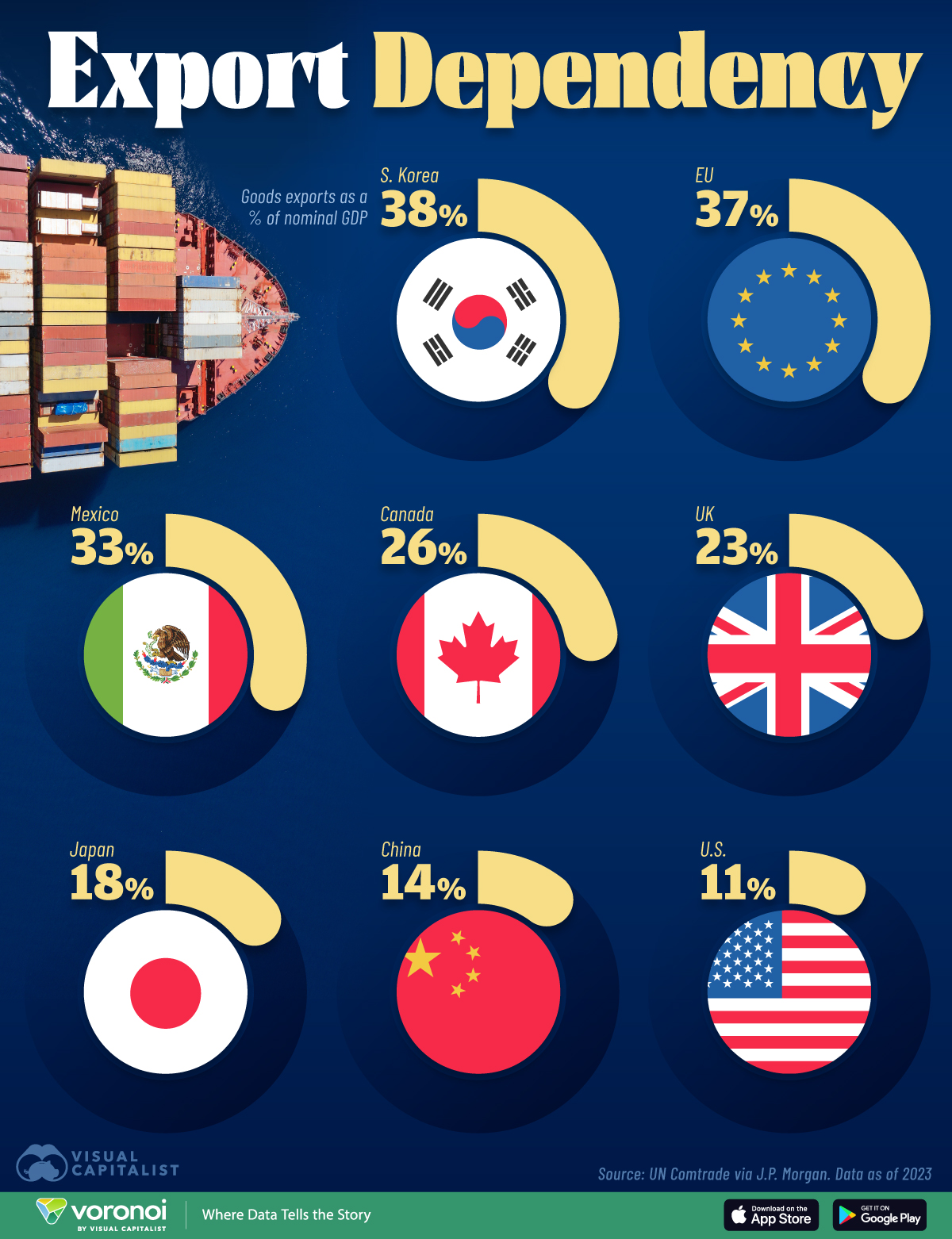Ranked: The Export Dependency of Major Economies
This was originally posted on our Voronoi app. Download the app for free on iOS or Android and discover incredible data-driven charts from a variety of trusted sources.
Global trade is in a precarious situation with rising tensions from President Trump’s reciprocal tariffs announced in early April, some of which were subsequently paused for 90 days on April 9, 2025.
These uncertainties can have far-reaching impacts, with trade flows playing a critical role in the GDP of several economies—especially those that are export-oriented.
This infographic highlights the export dependency of major economies, measured by the share of goods exports in nominal GDP in 2023. The data comes from U.N. Comtrade and was sourced from a report by J.P. Morgan Asset Management.
Which Countries Depend Most on Exports?
Some economies are heavily reliant on global markets to sustain their growth, while others, like the United States, rely more on domestic consumption.
Below is a breakdown of how much the export of goods contributes to national GDP across several major economies:
| Country | Exports as a share of nominal GDP (2023) |
|---|---|
 South Korea South Korea |
38% |
 EU EU |
37% |
 Mexico Mexico |
33% |
 Canada Canada |
26% |
 U.K. U.K. |
23% |
 Japan Japan |
18% |
 China China |
14% |
 U.S. U.S. |
11% |
At the top of the list is South Korea, where exports made up 38% of GDP in 2023. South Korea’s export engine is fueled by semiconductors, automobiles, and petroleum.
The European Union follows closely at 37%, with member nations trading between each other (exporting within the EU) as well as externally.
In North America, Mexico stands out with a high export-to-GDP ratio of 33%, followed by Canada at 26%. Unsurprisingly, the U.S. is the top destination for exports from both these countries, accounting for over 70% of their exports.
Meanwhile, China and the U.S. have the lowest export dependency among major economies, despite being the world’s two biggest goods exporters by value, respectively. The U.S. remains China’s top destination for exports, accounting for nearly 13% or $436 billion of Chinese exports in 2023.
The State of Global Trade in 2025
Globally, trade-reliant economies are vulnerable to rising protectionism and geopolitical tensions in 2025.
Trump’s newly raised tariff rates have left the global trade system and financial markets in turmoil, although the 90-day pause has led to relief for some countries.
However, tensions between the U.S. and China, the world’s two biggest economies, have only heightened. The U.S. has raised tariffs on Chinese imports to 145%, and China has escalated countermeasures with a 125% levy on U.S. goods.
Considering the uncertainty from these current events, the global trading system will likely see major shifts in 2025 as economies react to Trump’s foreign policy measures and work to establish new trade partners and correct trade imbalances.
Learn More on the Voronoi App 
See how the S&P 500’s downturn following Trump’s tariffs ranks among historical stock market crashes in this infographic on the Voronoi app.

